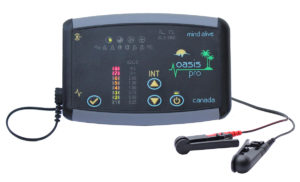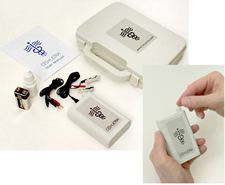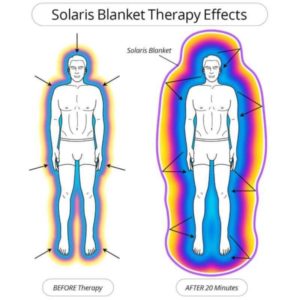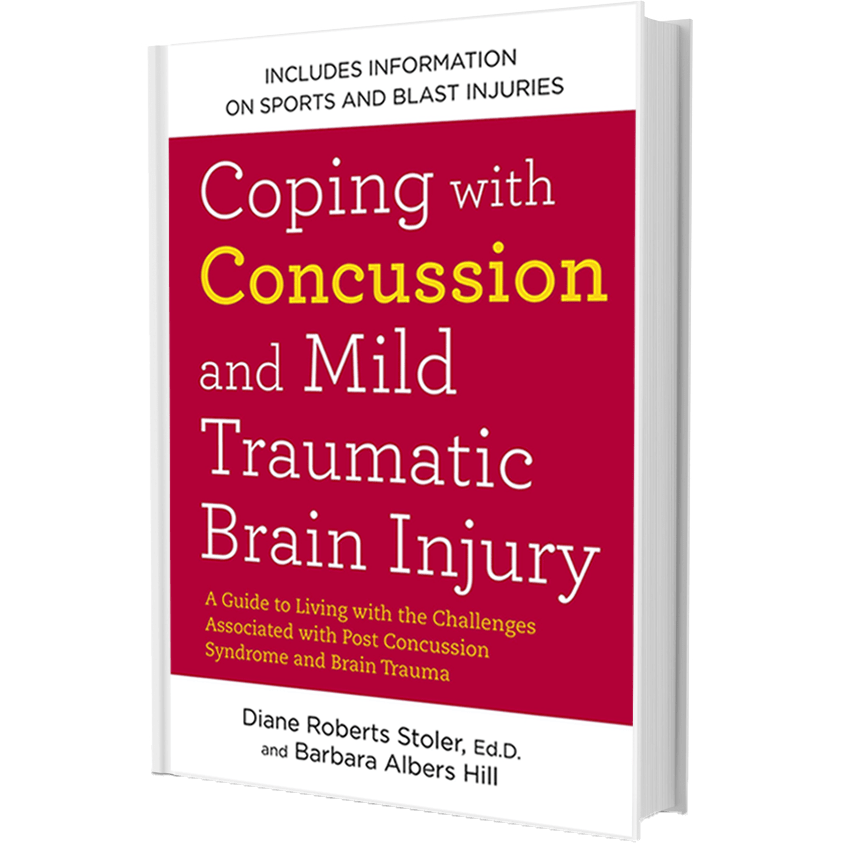PTSD – Alternative Treatments Provide Hope
Post-Traumatic Stress Disorder (PTSD) is a serious condition of emotional and behavioral disturbances that can occur after exposure to a shocking, dangerous, or traumatic event or a set of traumatic experiences. PTSD symptoms can be frightening, and can affect all aspects of one’s life, interfering with school, work, relationships, and everyday activities.
It is not unusual for people who have experienced trauma to suffer from Post-Traumatic Stress Disorder. Many people think of PTSD as something that exclusively affects soldiers returning from war, or people who have been through a terrorist attack. However, it is also possible to suffer PTSD from other forms of trauma such as sudden loss of a loved one, rape, incest, abuse, neglect, loss of your home from hurricane/tornado, auto accident, and domestic violence.
Nearly everyone will experience a range of reactions after trauma, yet most people recover from initial symptoms naturally. Those who continue to experience problems may be diagnosed with PTSD. Symptoms may not appear until several months or even years after the traumatic event. People who suffer PTSD may feel stressed or anxious even when they are not in danger.
Post-Traumatic Symptom Disorder (PTSD) Symptoms
PTSD is characterized by three main types of symptoms.
Flashbacks: Re-experiencing the trauma through intrusive distressing recollections of the event and nightmares, and experiencing the same bad feelings you felt when the traumatic event took place. Flashbacks are sometimes caused by a trigger. Triggers may include:
- witnessing an accident, which can remind a survivor of a crash of his/her own accident.
- Hearing fireworks or a car backfire, which can remind a war veteran of the gunfire and explosions they experienced in combat.
- Reading a news story about sexual assault, which may bring back memories of assault for a woman who was raped or a child that experienced sexual abuse.
Avoidance: Emotional numbness and avoidance of places, people, and activities that are reminders of the trauma. Avoiding talking or thinking about the event, and even isolation from other people all together.
- For example, a person who experienced a death of a child may avoid going to playgrounds, zoos, and other places where lots of children may frequent.
Hyperarousal: Increased arousal such as difficulty sleeping and concentrating, feeling jumpy, and being easily irritated and angered. Being on high alert or on guard without being in any danger. Feelings of hyperarousal include:
- Fear for your safety, on the lookout for signs of danger
- Easily startled, and constantly feeling “on edge”
- Troubling falling asleep or staying asleep
- Difficulty concentrating
- Suddenly become angry or irritable
- Impulsive, reckless and self-destructive behavior
What other problems do people with PTSD experience?
It is not uncommon for other conditions to co-exist with PTSD, such as anxiety, depression, sleep disturbances, or substance abuse. It is more common for men with PTSD to have problems with alcohol; while women with PTSD more commonly suffer from depression.
There is an increased rate of unemployment, marital issues (divorce, separation, spouse abuse) and incidents of violence amongst sufferers of PTSD. In addition, there is an increase in physical symptoms such as:
- Anxiety
- Panic attacks
- Sleep disturbances
- Helplessness
- Fatigue
- Hypervigilance
- Restlessness
- Shakiness
- Heart palpitations
PTSD in Children and Teenagers
Children and teenagers experience the same symptoms listed above, but symptoms can vary depending on how their age. Children aged 6-9 may act out the trauma through play, drawings, or stories. As children get older, their symptoms are more similar to those of an adult.
Other symptoms in children include:
- Separation anxiety, becoming upset if their parents are not nearby
- Trouble sleeping, night terrors, and/or nightmares
- Trouble going to the bathroom, toilet training, and/or bed-wetting.
- Aggression, sadness, and/or temper tantrums
- Increased anxiety, excessive worry, and fears that don’t seem to be connected to traumatic event.
Post-Traumatic Symptom Disorder (PTSD) Treatments
There are currently many treatments available for Post-Traumatic Stress Disorder, including talk therapy, cognitive behavioral therapy, and several forms of psychopharmacology. While those treatments certainly can have benefits, I would like to share with you some alternative methods for the treatment of PTSD.
These drug-free treatment methods are Reiki, Cranial Electrotherapy Stimulation (CES), and Restorative Health Blanket and/or Restorative Health Cushion. These methods are safe and effective for children and adults, and have no side-effects.
Reiki: Energy Healing
My integrative practice includes, Reiki practitioner, Clara, who has over fifteen years of experience with the healing properties of Reiki energy. Clara first encountered Reiki when she herself was dealing with symptoms of PTSD and connective tissue injuries. Clara had seen a variety of providers for her physical and emotional pain, including massage therapists, physical and occupational therapists, and counselors.
There was one massage therapist in particular with whom she experienced more intense relaxation and better results than she had with any of the other therapists. She asked the massage therapist why her treatments felt so different. Her massage therapist smiled and said, “Ah, that’s the Reiki.”
Reiki is a frequency of powerful, healing energy that is readily available in the universe. We can be trained to act as a conduit for this energy, making it available to ourselves or to each other. Clara’s massage therapist was making this energy available to Clara during her massage. Benefits from Reiki can include alleviating pain, calming Post-Traumatic symptoms, hastening recovery from surgery, and gaining insight into our lives.
Clara took her first class in Reiki soon after, and immediately began using Reiki to self-treat her own symptoms. She finds Reiki energy to be like a “warm, fuzzy blanket,” wrapping all the cells of her body in a feeling of comfort and protection.
Since that first class fifteen years ago, Clara has gained a Reiki Master Practitioner certification from one of the most respected programs in New England. She has also studied two other methods of energy healing and returned to school to obtain a degree in counseling. Today, Clara works as a professional Reiki practitioner, and has been treating others for many years. Throughout that time, Clara’s Reiki self-treatments have remained an important part of her own healing process, and she considers it a privilege to be able to share the benefits of this healing system with others.
Clara’s ability to be a clear and effective conduit for Reiki energy has continued to grow over the last fifteen years, both because of her daily practice in channeling Reiki energy, and from her advanced training in the discipline.
“It delights me when a client who is under stress falls asleep on my table and awakens at the end of a treatment relaxed and refreshed. I’m still amazed at the swift healing trajectory that Reiki brings for recent injuries and surgeries. And I’m still grateful when a client tells me that the comfort of a session makes the challenges of daily life more manageable.” -Clara
If you are suffering from PTSD and feeling anxious, tense, or fearful, the calming and energy-balancing effects of Reiki can be healing and beneficial.
Cranial Electrotherapy Stimulation (CES)
Cranial Electrotherapy Stimulation or CES is a safe, effective, relaxing treatment for Post-Traumatic Stress Disorder as well as other health problems including anxiety, depression, insomnia and chronic headaches.
A Cranial Electrotherapy Stimulation machine is a hand-held device that uses small electrical currents to restore emotional balance by stabilizing equilibrium in the central nervous system.
How Cranial Electrotherapy Stimulation Works
Ear clips or self-adhesive gel pads connected to the CES machine are used to mildly stimulate the vagus nerve in the brain. The vagus nerve is often referred to as the post-trauma nerve because it connects directly to the oldest part of the brain, the “reptilian brain.” Traumatic experiences can change the reptilian brain significantly, putting it into a state of constant anxiety (sometimes called “hypervigilance”) by replaying the trauma over and over again. By stimulating the vagus nerve, the CES machine restores balance in
this part of the brain, and then allows the brain to maintain this balance, no matter how old or severe the trauma symptoms. Cranial Electrotherapy Stimulation also elevates mood, relieves depression, releases tension and normalizes sleep patterns, with no harmful side effects.
CES is a safe, non-invasive, FDA-cleared, drug-free therapy for Post-Traumatic Stress Disorder symptoms. No electrical current enters the brain; rather, the CES technology simply restores the balance of energy in the brain and body. Cranial Electrotherapy Stimulation technology has been in use for decades.
While there are various manufacturers and models of CES devices available on the market, at Dr. Diane Brain Health we recommend two very cost-effective, and user-friendly devices, CES Ultra and CES Oasis Pro.
Requires prescription in the US. Fill out our contact form or call 800-500-9971 to find out which device is best for you.
Restorative Health Blanket and Restorative Health Cushion
The Restorative Health Blanket and Restorative Health Cushion were developed to re-balance and restore harmony to the body’s natural energy flow, provides amazing health benefits by working as both an “energy shield” and as an “energy mirror”. Reflecting the body’s own “energetic portrait” provides favorable conditions for healing and enhancing overall well-being for all ages.
Dr. Wilhelm Reich’s work on Orgone energy inspired the development of the Restorative Health Blanket. The theory of Orgone energy is Reich’s reference to the subtle body energy that is part of our manifold being which is negatively affected by both internal and external factors. Using this concept, the blanket’s material acts like an electro-magnetic mirror, reflecting the body’s energy portrait, thus improving the body’s self-corrective ability.
The Restorative Health Blanket and/or Restorative Health Cushion provide health benefits naturally while relieving psycho-emotional tension and fatigue; stress and anxiety, insomnia, constant worry; physical, mental, and emotional exhaustion; stiff muscles, chronic muscle pain, and muscular spasms; high blood pressure; hyperactivity; and low energy.
By wrapping yourself in the Restorative Health Blanket or by using the Restorative Health Cushion while watching television, driving, or at work, you can quickly feel a calming effect and a greater sense of security.
Restorative Health Blanket/Cushion Uses:
- Increases brain wave activity thereby enhancing one’s mood and outlook
- Protects from harmful electromagnetic fields
- Reflects the problem areas in the body’s “energy portrait” back on itself, thereby acting as a homeopathic stimulus for immune and healing responses
- Safe to use, with no complications, or side effects
- Can be used as a stand-alone treatment or combined with other therapies, fitness, or wellness programs
- Practical and portable—can be used in the home or office, fitness center, or on the road.
There is Help and Hope. There is a Way™!
If you or a loved one has experienced a traumatic event from terrorist attacks, rape, incest, abuse, neglect, loss of your home from hurricane/tornado, auto accident, domestic violence or war, you know the consequences of PTSD.
If you are suffering from Post-Traumatic Stress Disorder and would like to find a safe, relaxing, drug-free way to alleviate your symptoms, consider exploring these treatments: Reiki, Cranial Electrotherapy Stimulation, and Restorative Health Products.
As I previously mentioned, psychotherapy and prescription medicine are often used to treat PTSD effectively, but may not be for everybody. In some cases, the side-effects from prescription drugs outweigh the benefits. These convenient, alternative treatments can be used alone or in conjunction with other traditional and complementary methods. They can even be done at home.
Have you gone to numerous doctors or been in rehabilitation for Treatment for PTSD and nothing has helped? We can help! Fill out our contact form or call 800-500-9971 for more.
Do you need help managing symptoms of PTSD?
Schedule a consult with Dr. Diane. Feel Better Today!
Dr. Diane® Brain Health utilizes state of the art and cutting edge technology, and has the Solutions and Resources℠ to get you feeling your best. The Dr. Diane® integrative team of Brain Health Experts specialize in conventional, complementary and alternative methods. This team, using her 5 Prong Approach, can develop a customized treatment plan, because Dr. Diane® sees each person as a unique individual and knows that one method does not fit everyone.







Reiki & Cranial Electrical Stimulation can be especially useful in PTSD treatment packages. Very different tools. We used both as parts of the multi-modal integrative PTSD program at Fort Hood. After evaluating 1400 graduates of the program, I want both of these modalities available in a package of tools for complex PTSD. Neither have any particular negative effects but they are not stand-alone treatments (but then nothing else is either.)
1) Reiki is one of the best modalities for reducing hyper-arousal and pain, particularly headaches. In addition, Reiki teams very well with EFT and EMDR in tackling trauma memories. Magic happens often enough see the combination as a first line approach. Probably should be part of a team approach – at least therapist and Reiki practitioner – since they are synergistic and get down to the truth of trauma experiences.
2) Cranial Electrical Stimulation (We used a specific device called an Alpha Stim Model M – that was what was available to soldiers. Other devices are on the market.) CES is a specific for hyper-arousal, sleep, headache and pain. Our TBI soldiers used it all the time. Useful for knocking down emotional uproar, anger, headaches and reactivity. Soldiers used it while doing in vivo exposure homework or for recovering from digging into trauma reactions.
Anything like this in a he San Francisco Bay Area?
Hi, Dr. Diane can consult virtually over Zoom. After the initial consult, Dr. Diane can identify a team of experts in your area to provide ongoing treatment. Please call our office to schedule a consult. 800-500-9971.
I am recovering from PTSD and receive great benefit from Reiki. I would like to be completely drug-free in my treatment, but I have found that I need a small dose of anti-anxiety and anti-depression medication, along with nontraditional treatments, and doing my own work to heal. There are so many people with a PTSD diagnosis who are looking for the magical pill, therapy, or clinician to heal them without doing the hard work to create their new normal – big life.
Yes you need to find the right fit of what works for you personally. Reiki is great, have you tried other drug-free treatments such as the CES, acupuncture, neurofeedback, etc… ? There is a Way!